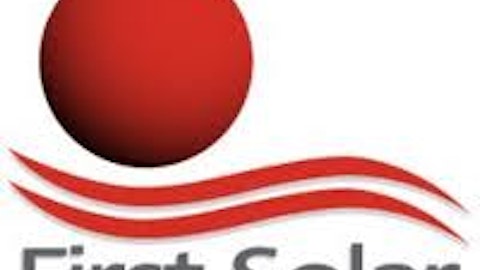Solar power is becoming more and more viable as an electricity source but it’s being tested in some very exciting and “out there” applications as well. Let’s take a peak into a few places beyond the rooftop and utility plants where we may use solar power in the future.
The roads of tomorrow
According to Solar Roadways, there are over 45,000 square miles of paved surfaces in the U.S., which could be generating solar energy. According to their calculations, if two-thirds of that space were filled with solar panel roads (concept shown below) using 18.5% efficient modules generating peak power for just four hours per day, then we could generate three times the electricity usage of the U.S. every year (assumptions and calculations can be found here). It may seem like a far-fetched idea but the economics are solid — the biggest hurdle may be in designing a surface that works as well or better than asphalt or concrete.
What Solar Roadways is working on is a modular road section with solar cells and LEDs that would allow for an interactive road surface, which could notify about diversions during traffic jams, warn about animals on the road, or alert drivers of an accident ahead. Below is an image that shows the vision of Solar Roadways.

Image courtesy of Solar Roadways; art by Dan Walden.
It’s a wild leap to think of road surfaces as power generating assets but there are a lot of practical advantages to this approach. Solar Roadways is designing a system with square modules that would be easily replaceable if damaged. From a cost standpoint, road surfaces may also provide one of the more economical locations to put up solar power because they’re already incredibly expensive to start with.
Let’s throw around some numbers to show just how feasible this may be. SunPower Corporation (NASDAQ:SPWR)‘s new 21.5% efficient X-Series panel generates 335 watts of electricity in 17.6 square feet. A highway is a minimum of 12 feet wide so a one-mile two-lane highway would have at least 126,720 square feet, or enough for 2,412 kilowatts of solar. If we assume a cost of $5 per watt (about double the cost of a utility-scale project) that would be $12.1 million for a one-mile, two-lane road that would generate about 3.5 million kilowatt-hours of power each year. A similar length asphalt road wouldn’t be nearly this expensive but if we’re generating power that pays a rate of $0.18 per kilowatt-hour (similar rates to rooftop PPAs) the road would pay for itself in 19 years.
These are ballpark numbers and none of this is proven on a large scale, but the concept is exciting and potentially very profitable for everyone involved if the technical challenges can be worked out.
Around the world on solar
Driving on solar roads may be years, even decades away, but powering a boat with solar power is very much a reality. PlanetSolar is a 31-meter catamaran built in 2010 complete with 516 square meters of SunPower Corporation (NASDAQ:SPWR)’s 18.8% efficient solar panels. The boat sailed around the world from 2010 to 2012 and over this past weekend it finished a transatlantic crossing in 22 days, 12 hours, and 32 minutes, beating its own record for a solar-powered crossing by four days.
Below is a picture of the PlanetSolar catamaran along the coast of Miami.

Source: Wikimedia
Thousands of vessels travel our oceans every year and solar energy would be a cheap, easy way to add power to many of these fleets. With PlantSolar proving that it’s possible to power a boat with solar alone maybe this will open up another industry to the solar revolution. At the very least, the image of PlanetSolar cruising the coast of Miami on nothing but solar power is an impressive one.
